If you’re a dog lover, chances are you’ve admired the majestic Black German Shepherd, known for their striking, all-black coats and noble demeanor. But how much do you really know about these captivating canines?
In our latest guide, we’re diving deep into the lesser-known aspects of this remarkable breed. From their unique genetics to their surprising abilities, we’ve compiled a list of intriguing facts that even the most devoted dog enthusiasts might not be aware of.
Whether you’re a proud owner, are considering adding a Black German Shepherd to your family, or are simply a fan of these beautiful dogs, prepare to be amazed by what you discover.
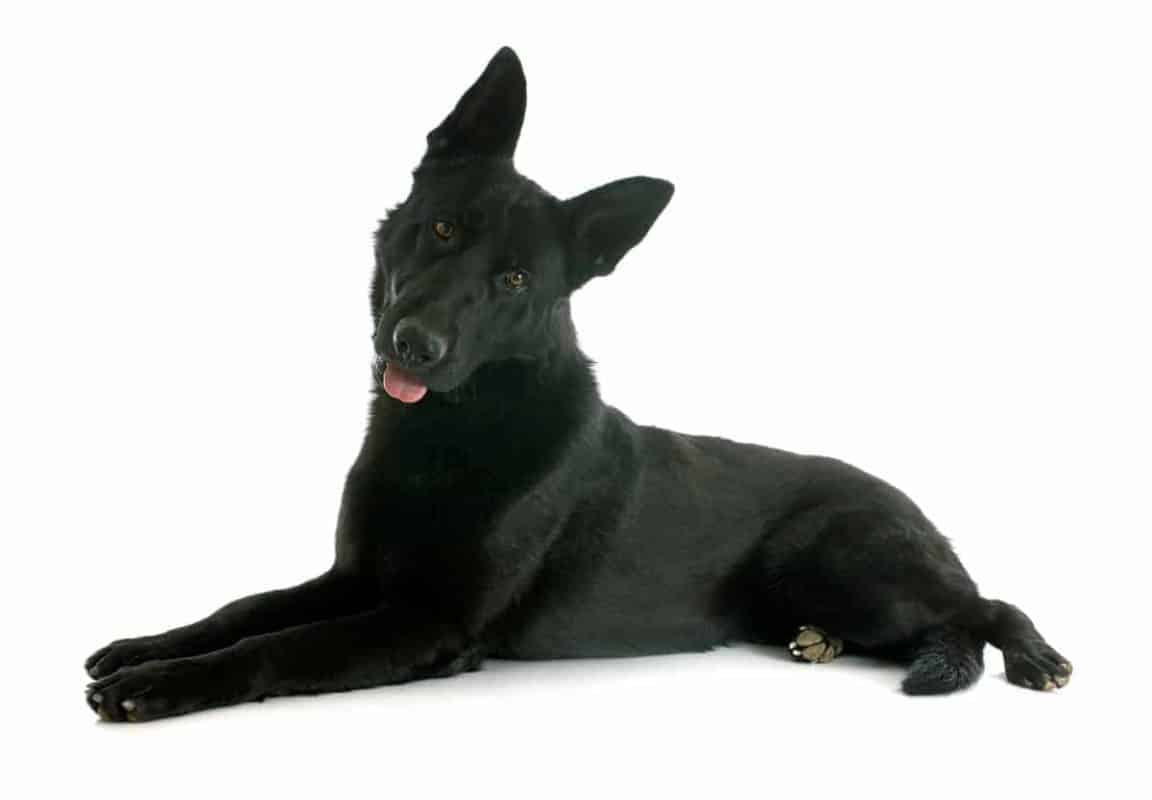
Exploring the Mystique of Black German Shepherds
1. Black German Shepherds Are Purebred
You might have heard people describe a dog as a crossbreed from the color of its coat, especially when such color is rare. And although they may be right in some cases, they might be mistaken in others.
A purebred German Shepherd is thoroughbred from an unmixed lineage. In other words, former dogs in its family line were all German Shepherds, and no other breeds were used to sire puppies.
While you can do a DNA test to find out if your black German Shepherd is purebred, a common and quick way of knowing is to register your dog with a national kennel club so that it can be assessed for breed-standard traits.
You can check the documented pedigree in a studbook of the breed’s club, such as the AKC. Your breeder will describe that as a “German Shepherd with papers.”
Learn More About The Black German Shepherd In Our Video…
To be pedigreed by the AKC, a German Shepherd in the US must meet set German Shepherd breed standards. The club indicates that the dog has varied colors, most of which are permissible even though strong, rich colors are preferred.
Contrarily, dogs with colors that are pale and washed-out, as well as blues and livers, are considered faults. A white German Shepherd is also purebred, but dogs with coat color faults do not participate in breed competitions.
Considering the standard coat colors, the black German Shepherd fits perfectly for its strong, rich black color. This disqualifies generalizations that believe a dog with the variant black coat color is a crossbreed.
Coat colors that meet breed standards include black and tan, black and red, the sable German Shepherd, and the bi-color (more black than tan).
But what exactly causes variation in German Shepherds’ coat color? That’s my focus in the next fact.
2. A Recessive Gene Causes the Black Coat
Being a black German Shepherd is a gene issue. Breeders know well that a puppy’s coat color is determined before it’s born because they are passed on from the parents to offspring, thanks to genetic inheritance.
Genes are the basic unit of heredity that make up the proteins that determine physical and character traits in organisms.
The genes that an offspring inherits from its parents make up its genotype, while its phenotype is made up of the traits that the genes give.
Dogs inherit 39 pairs of genes from their parents (39 copies from each parent). Eight of these pairs are responsible for coat color. The copies of genes can be the same or different.
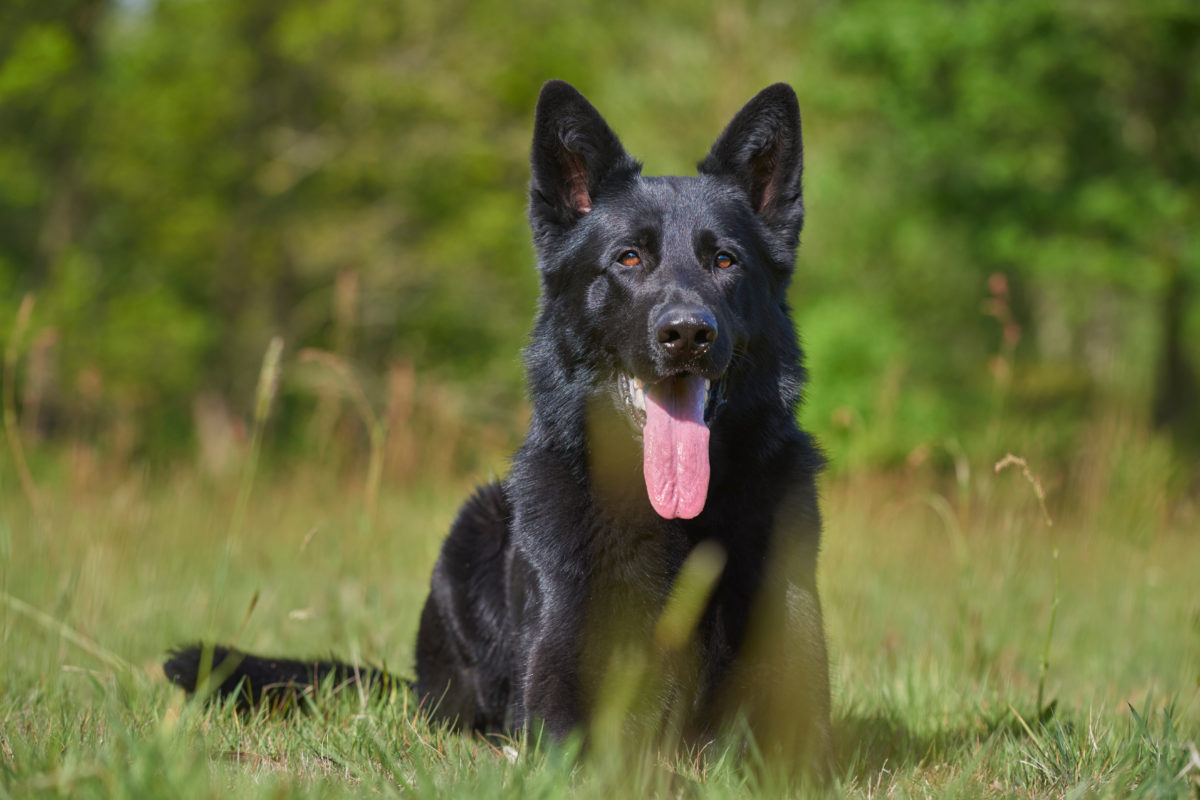
Different versions of a gene are called alleles, and they cause variation in how, when, and how much of a protein is produced by a gene.
This difference creates unique traits in an offspring, giving one German Shepherd a black coat and another a sable color.
A copy of a color gene can be overridden, which literally means it works harder to determine the color of a dog’s coat while suppressing the role of the other copy.
This extra-active gene is described as dominant, while the suppressed one is recessive.
If an offspring receives two recessive copies from the parents, they have no dominant copy to compete with the recessive gene, and they take the color given by the recessive gene.
Different from other breeds like the Belgian Shepherd, Australian Shepherd, Border Collie, and Shetland Sheepdog, where the black coat color is dominant, in German Shepherds, the black coat color gene is recessive.
This means that a puppy will have a black coat in three different situations:
- If its parents are both black color coats (both have a pair of recessive genes for the black coat).
- If both parents are carriers of the recessive gene for the black color coat they pass it to the offspring.
- One of the parents is a black color coat and the other a carrier of the recessive gene for the black color coat.
Here’s a representation of what that means, assuming that the black gene is represented by the letter k and other dominant colors are represented by a K.
| Sire | Dam | Puppy |
| kk (All black color coat) | kk (All black color coat) | kk (All black color coat) |
| Kk (Other coat color but a carrier of the recessive gene for the black color coat) | Kk (Other coat color but a carrier of the recessive gene for the black color coat) | kk (All black color coat. Puppy, in this case, can also become a recessive carrier, Kk) |
| Kk (Other coat color but a carrier of the recessive gene for the black color coat) | kk (All black color coat) | kk (All black color coat. Puppy, in this case, can also become a recessive carrier, Kk) |
It’s important to note that recessive genes are normal genes. They cause variation in traits, unlike mutated genes that can cause abnormal variations.
You can read about color dominance in dogs and how to test breeding dogs for coat color genes here.
Related: Blue-Eyed German Shepherd
In some cases, traits from a recessive gene can become the most common if they are consistently reproduced. But in most cases, recessive gene traits are rare, which introduces my next black German Shepherd fact.
But first! Watch these five gorgeous dogs running crazy and having fun…
3. They Are Rare – But May Not Be in the Future
Rare coat colors in dogs are not carried by most dogs in a breed. For example, the black and tan colors are common among GSDs, while the black coat is rare.
It is said that less than 10% of German Shepherd puppies in the world maintain a solid black color.
Also, experts in genetics explain that dominance does not equate to the most common, which also means that recessive does not automatically mean less common.
As such, the rarity of the black German Shepherd shows how frequently the recessive gene for black coat color is expressed among German Shepherds.
But that may not be the case in the future, and here’s why.
More and more people are opting for rarer coat colors of the German Shepherd. For example, some of the foster homes for rescued dogs prefer sable and solid black colors and not black and red or black and tan.

If dog breeding was left up to nature, the black German Shepherd might continue to be rare. But to please the preference of their buyers, breeders today manipulate breeding to produce desired coat colors in puppies.
This means that the rise in the preference for black German Shepherd dogs may lead to these coat color variations becoming more common (which has nothing to do with gene dominance).
Breeders can predetermine dog coat color by having agouti testing done on their breeding dogs to know which coat color alleles are present in these dogs and the possible coat colors that will result from specific mating between breeding dogs.
Consider this example.
A state has 8,000 registered German Shepherd puppies to date: 40% are brown and tan, 30% brown and red, 10% solid black, and the other 20% other coat colors.
Assume that more black German Shepherds are produced in this state in the next ten years through breeding manipulation to satisfy dog owners’ preferences for the solid black coat.
That might make black the most frequently represented color coat among German Shepherds, even though the black coat color remains recessive and brown dominant.
But we must wait ten years to see if my example becomes a reality!
In the meantime, let’s take a temperament-related fact next.
4. They Are Not More Aggressive Than Other Colors
It is not rare to hear people make assumptions about dog temperament and behavior based purely on physical appearances like coat color. In fact, you might have heard people who describe the black German Shepherd as more aggressive.
But that’s just a myth, or as the famous dog psychologist Stanley Coren says, a superstition rooted in tradition.
In many cultures, black cats and dogs are associated with bad luck and are even considered the embodiment of the devil. This misconception from the past has crept into contemporary thinking, shaping attitudes toward black canines.
Surprisingly, there are also countries like Japan where black dogs are accepted and, instead, white ones are the bad omen. In other places like Scotland, white & black dogs are bearers of good luck.
Unfortunately, the negative attitude towards black dogs seems to have found its way into shelter homes.
When people go to adopt or provide foster care, they will bypass black dogs in favor of other colors.
This behavior, dubbed black dog syndrome, makes it more difficult for rescued dogs with black coats to find a new home.
Researchers have also given a scientific focus on the negative attitudes toward black dogs. For example, one study found that participants made an arbitrary judgment of black dogs as aggressive for the mere reason of having a black coat.
To disqualify these unfounded stereotypes, research on people’s perception of dog personality based on ear shape and coat color revealed that, even though people use these traits to judge the character of dogs, these features have no impact on dog temperament.
It’s clear, then, that associating black German Shepherds with aggressive behavior is an assumption that has not been scientifically proven.
Rather than color and other demographic traits like dog size, breed, and gender, research shows that contextual factors are more responsible for dog aggression. These factors include:
- Poor obedience training
- The quality of care given by the owner
- Professional training in which the owner does not participate (the dog will not recognize the owner as the alpha)
- Spoiling your dog and letting it have its way
To help your black German Shepherd become friendly rather than aggressive, proper social training is required.
Well-trained black German Shepherds are good family dogs. They will have all the good qualities of a standard GSD, including being loyal, loving, protective, and affectionate, among others.
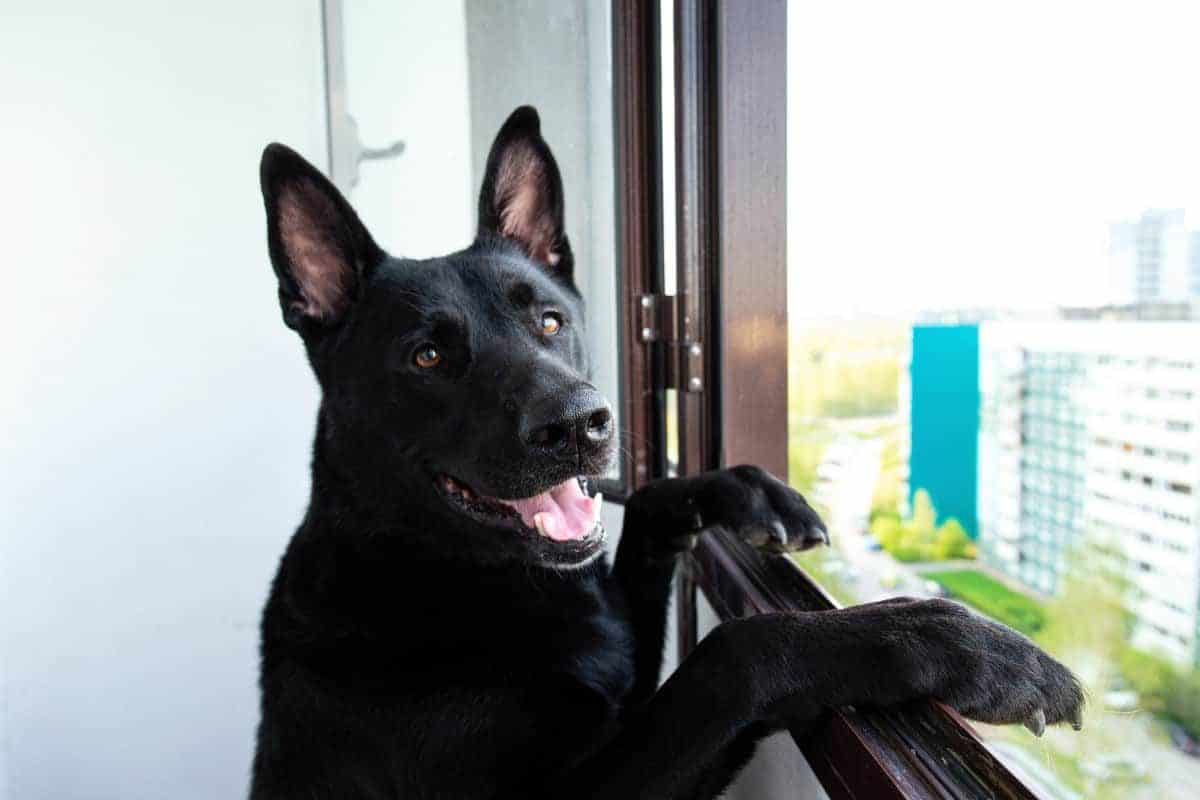
5. The Truth About Pricing – No Extra Cost
Because of the assumed rarity associated with black German Shepherd dogs, prospective dog owners may think they must dig deeper into their pockets to buy a black German Shepherd Dog.
Some unethical breeders may also use the same to inflate the price of their black GSDs.
Black German Shepherds cost between $1500 to $2000. However, expect to pay $2000 for a high-quality puppy with full AKC registration.
The price of solid black German Shepherd puppies is similar to that of more common coat colors such as black and tan or black and red.
The figures above are derived from my research below. So, let’s consider these five examples showing that black German Shepherds are not more expensive.
Cs Vista Farms German Shepherds
This breeder in Northern California specializes in black German Shepherd dogs and those with white and silver coat colors. Their dogs are all priced at $2,000, irrespective of coat color.
In fact, buyers acquiring a German Shepherd for military/police, service dogs, and those who have previously bought a dog from the breeder even get a discount.
Vom Hallynn Haus German Shepherds
Vom Hallynn Haus German Shepherds in Virginia, specializes in solid black German Shepherds and sable coat dogs.
Dogs with limited AKC registration are priced at $1500, while those with full registration sell for $2,000 regardless of their coat color.
Browning Haus Solid Black German Shepherds
Browning Haus is located in Northern Michigan and specializes in solid black GSDs. Their black German Shepherds are priced at $2,000 for those with a limited AKC registration and $3,000 for those with full registration.
Sentinel Harts Working Lineage German Shepherds
Another breeder located in the foothills of East San Francisco Bay, CA, has “an emphasis on the recessive black color pattern and overall dark pigmented coats.” Their black German Shepherds are all priced at $2,500.
Pure Black German Shepherds of Hartland
Pure Black German Shepherds of Hartland, Michigan, breed solid black German Shepherds and the sable coat variety. Solid black GSDs are listed for $1,800, while sable dogs cost $1500.
As can be seen from the examples, black-coat German Shepherds do not really deviate from the average $2,000 price for standard GSDs, irrespective of the breeder’s location in the US.
In my five examples, only one breeder has a $300 difference between sable and black German Shepherds, and both prices are below $2,000.
In other cases where there is a difference in prices, this is determined by partial/full registration and not coat color.
Two cases have prices beyond $2,000. However, my previous research has revealed that German Shepherds with standard colors can go for prices higher than $2,500 and $3,000, depending on factors such as lineage, breeding cost, dog’s age, and breeder’s qualification.
I have a more in-depth article on German Shepherd prices, which gives 21 examples and includes what to look for in a breeder.
6. The Black Coat Can Turn White
There are some skin conditions associated with dogs. One such condition that affects German Shepherds is Leukotrichia. This skin condition causes a dog to lose hair or makes it gradually turn white.
Leukotrichia is generally associated with inflammatory and metabolic diseases such as cutaneous lymphocytosis, cutaneous lymphoma, vitiligo, and Alopecia areata.
Hormonal imbalance and the use of certain medications have also been linked to skin conditions.
Read the case of Vela, a female black German Shepherd Dog whose color turned white in two years, starting from the head to the rest of the body.
Vets diagnosed her with Leukotrichia. The condition was later linked to Alopecia areata after a thorough follow-up.
Alopecia areata is an uncommon immune condition that causes hair loss by disordering the hair cycle and producing melanin (hair coloration).
Interruption of the hair cycle comes as a result of damage to the hair bulb, while hair discoloration results from the failure of melanocytes to deposit color to the hair. See the case in this article.
In Vela’s case, Alopecia areata had disordered the melanocytes, making her hair white (Leukotrichia). Some dogs with Leukotrichia may eventually regain their hair pigmentation.
Talk to your vet immediately if you notice any white patches or hair loss.
Other skin conditions that can affect your black German Shepherd include black hair follicular dysplasia and “Collie nose,” Nasal solar dermatitis.
7. Naturally Noir: The Birth Color of Solid Black German Shepherds
Stating that the solid black German Shepherd is born black might sound obvious. But did you know that most German Shepherd puppies only show their true color weeks after birth?
For example, the black & red and the black & tan puppies are born almost completely black.
The color variations on their coat only become clear weeks after their birth and continue to become more pronounced during the first two years of their life.
Solid black coat puppies are born black and keep their coat color in adulthood.
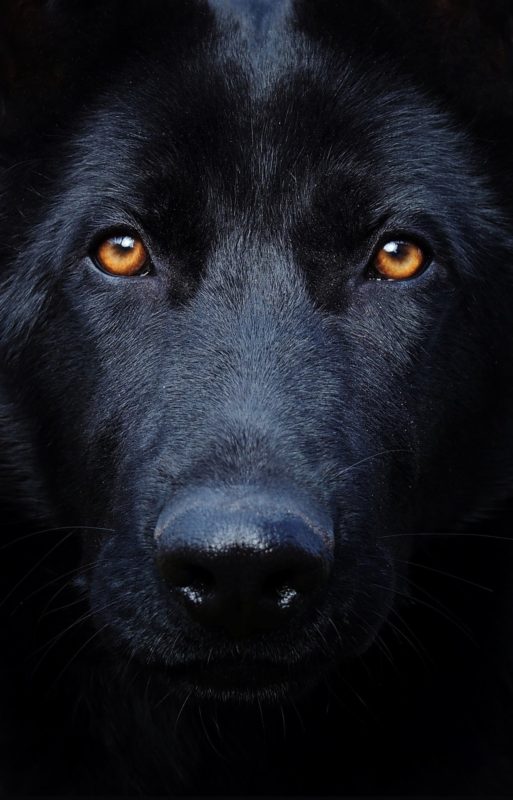
But how do you know you are buying a solid black German Shepherd puppy?
It appears that breeders have learned to tell puppy coat colors as soon as they are born – you may have to trust them.
Learn about the qualities of a trustworthy German Shepherd breeder in my article, How to Buy a German Shepherd.
Waiting to bring your puppy home until the recommended eight weeks will give him time to show his true coat color. Once home, you’ll discover that you made a great color choice, as we discuss in the next fact!
8. They Will Annoy You Less With Shedding!
The German Shepherd is a heavy-shedding breed. It sheds regularly and will shed more in fall to prepare for the winter cold and spring to anticipate the summer heat.
Because it’s a heavy shedder, the German Shepherd requires regular brushing. This will not only control shedding but also prevent excessive fur around your home.
Like all other color coats, the black variety will shed regularly and “blow their coat” in fall and spring. This announces quite a bit more hair on your couch and/or clothing!
Unlike brown and red fur that will readily show on most colors of your clothing or couch, black fur will show less – except, of course, on white or extremely bright colors!
If you are a bit “OCD ish” where cleanliness and housework are concerned, you will get less annoyed with fewer hairs around than you can actually see!
You can also opt for grooming products designed to care for your black German Shepherd’s fur and maintain its natural sheen. A good quality shampoo purposely formulated to help maintain your pet’s natural black shine.
9. Not Every Dog Described as Black is all Black!
If you contact a breeder to reserve an upcoming black German Shepherd puppy, you might want to stress that you mean a solid black German Shepherd.
As it seems, the term black German Shepherd is not exclusively used for those with a solid black coat.
Some people will speak of black German Shepherds to refer to any dog that has black fur somewhere on their coat, including all these variations:
- Black and tan coat
- Black and red coat
- Black with few patches of brown or red (bi-color)
- Black completely mixed with brown/red (sable)
- Black and white/grey coat
Additionally, the term black German Shepherd has been used to differentiate the type of black German Shepherds in historical lineages of the breed, even though their coats are either solid black or bi-color.
FAQs
Are black German Shepherds a separate breed from regular dogs?
No, black German Shepherds are not considered a separate breed – they are German Shepherds that happen to be black. All German Shepherds, regardless of coat color, descend from the same ancestral lines. Black is a recessive gene that some Shepherds naturally carry.
How long do black German Shepherds typically live?
On average, black German Shepherds live 9-13 years like their traditionally colored counterparts. However, some live even longer with exceptional care. Their life expectancy depends more on genetics and an individual’s overall health and maintenance rather than coat color alone.
With a balanced diet, regular exercise, and preventive healthcare, many black Shepherds enjoy long, active lives.
Summing Up
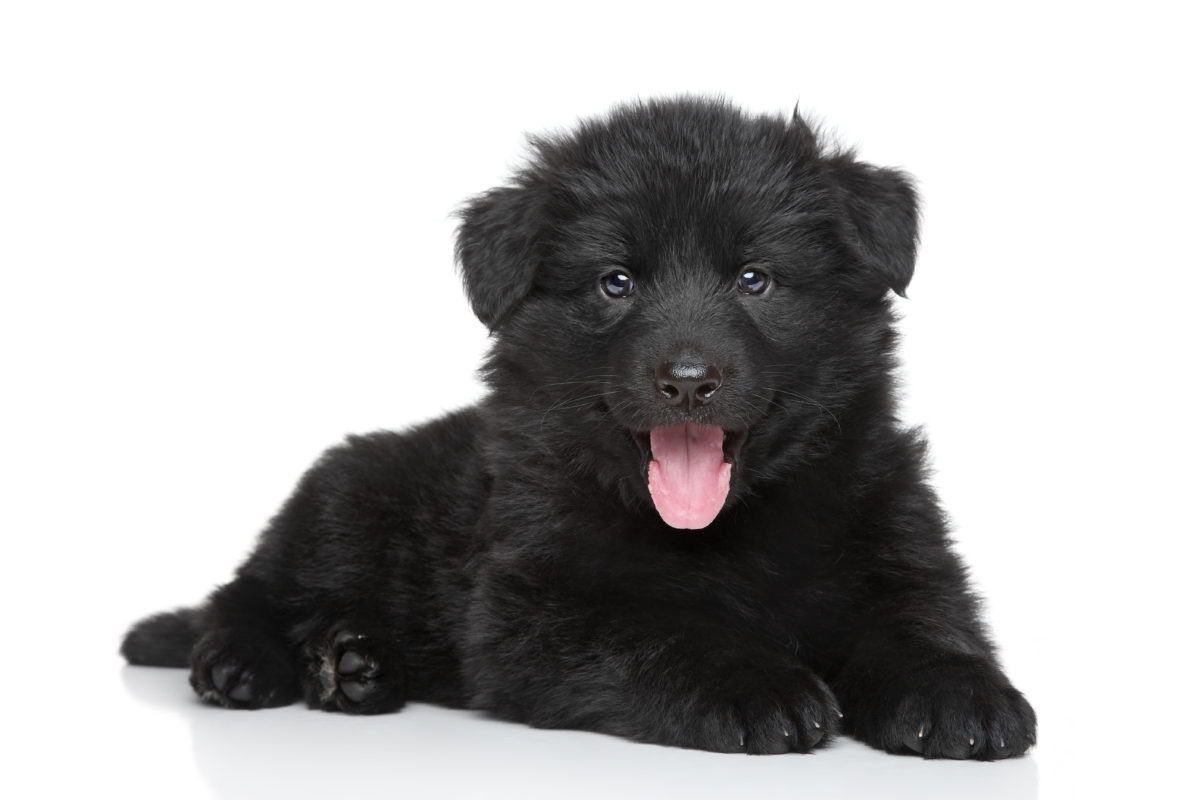
Traditional superstitions about black dogs being evil are still among contemporary folks, even though they seem to be slowly fading out. The coexistence of both attitudes toward black dogs explains why some people will bypass black dogs when adopting from a rescue home while others will pay breeders to get a black puppy.
Black German Shepherds are rare, but consistent breeding to produce their black coat might eliminate this rarity in the future.
It seems that the preference for black GSDs has not been widespread enough to make breeders hike their prices, as these rare-color pets have prices around the usual average price of $2,000.
Even though some will consider black German Shepherds more aggressive, these gorgeous dogs are loyal, friendly, and protective with proper training and socialization, just like all other German Shepherd varieties.
That explains why some dog lovers say, “There is no dog with bad color!”





